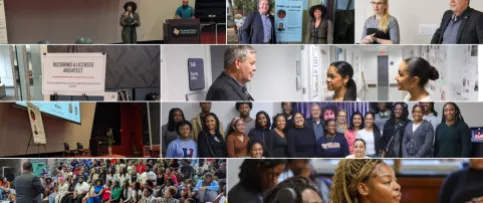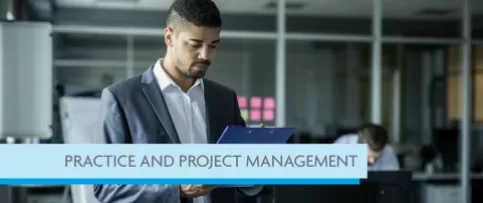California architect Jon Alan Baker, FAIA, NCARB, LEED AP, was inaugurated as NCARB’s FY24 president at the 2023 Annual Business Meeting in June. As the first NCARB president in over 50 years to not hold a college degree, Baker’s vision for his year as president includes an exploration of additional pathways to licensure for candidates from all educational backgrounds.
What do you love about architecture?
I love the creative process. I love the challenge that goes with solving planning problems. I love the act of pulling from a client all the things that matter to them—their goals, their needs, their expectations—and evaluating the conditions. Design is circumstantial. It is and should be heavily influenced by the conditions of a site and its surrounding environment. As architects, we must consider all of those factors and develop a solution that addresses all the moving parts. I've never lost the satisfaction that I get from doing that. The more complicated, the better!
Why was earning a license important to you?
It never occurred to me that you would enter the architecture field and not get licensed. I never had anybody tell me I should get licensed. I never had anybody tell me I shouldn't get licensed. I wanted to be an architect, so I always believed that I would do the work and take the test and get licensed, so that was always the plan.
What did your path to licensure look like?
I didn't grow up with the kind of resources that would allow me to go to college. I was raised by a single mom with very limited resources. If I was going to go to college, I was going to have to pay for it myself.
After I finished with four years of high school drafting, I got a job as a draftsman for a company that built modular homes. I had a boss who was the supervisor of the engineering department, and I was the engineering department. It was him and me, and right outside our office door was the factory where they built all the homes, so I drew, I walked the shop floor, I talked to the workers, and then I went back in and redrew things so that they could build them properly, and I learned a ton. I had probably as much fun doing that as any job I ever had.
But I ultimately wanted to be an architect, so I had to decide when I could afford to do that. After a couple of years, I enrolled in Cal Poly and started taking some classes. I had to work 40 hours a week to be able to afford it, which was difficult while also being a full-time student. After about two years of that, I decided I’d had enough. I called the next morning and canceled my classes, got a new job in an architectural office, and never looked back.
And so, my career path is entirely without a college degree other than a few classes. In California, you can get licensed without a degree by earning additional experience. I put in my seven and a half years in California. I sat for the exam, passed everything, and got licensed.
I learn by doing things, and I enjoy the creative act of designing and drawing so much that working for eight years to get licensed wasn't really a chore. I enjoyed every day of it, and I learned so much in that process that I can't imagine substituting it for anything else. It may not work for everybody, but it was the only path I had, and it worked for me.
Why do you think it's important to have multiple ways to get licensed?
There is a large cohort of people who have the resources to go to accredited schools, and they contribute a lot of great things to our profession. But there are also a lot of talented, hardworking people who will never have the resources or the time to go to college. But they can also contribute a lot to our profession, and I think finding pathways for those people to enter architecture is hugely important, both for them and for the profession.
What do you want to focus on during your year as president?
Well, there are several things in progress that I plan to continue: FY21 President Robert Calvani started an exploration of competency that is hugely important and far more complex than you might realize. FY22 President Alfred Vidaurri initiated a focus on diversity, equity, and inclusion and how we integrate that into the structure of the organization. And FY23 President Bayliss Ward started two task forces that are reimagining what the licensure process looks like in the future. Those are all important things that we must carry forward.
I'm a strong believer that this organization and our profession is better with a more diverse membership. And to have a diverse membership, we must draw from a larger pool of people and provide pathways that are accessible to people who don't have access to the current pathways.
So, my biggest priority is to get the ball rolling when it comes to developing additional pathways that can provide access into this profession by people who are typically overlooked and left behind. There are huge opportunities for us to tap into when it comes to individuals without a degree from an accredited program, or any degree, or who studied at community college. There's tremendous talent and diversity in those groups to be able to draw from that'll make our profession better—it'll make the experience for clients better, it'll make the work better, and it'll make our organization better.
I would like us to recognize the value of a degree from an accredited program, as well as the value of a non-accredited degree and the value of someone who has some college, but not a whole degree. And I would like us to recognize candidates who developed their professional skills by working in the profession. I want us to recognize the value of those backgrounds on an equal level—because they are. At the end of the day, when those individuals get licensed, the path they took is less relevant than the competencies that they bring to the table.


